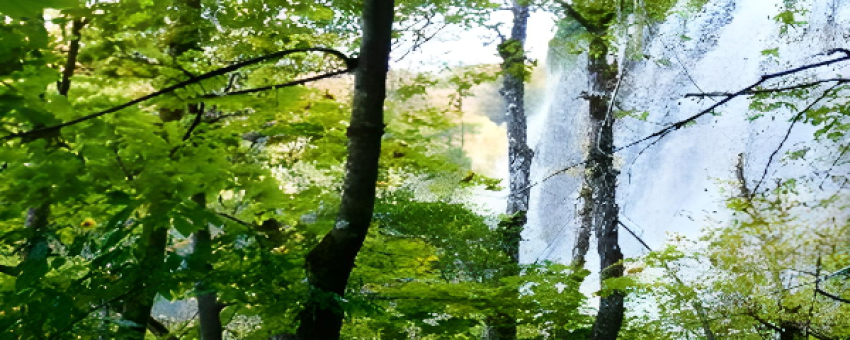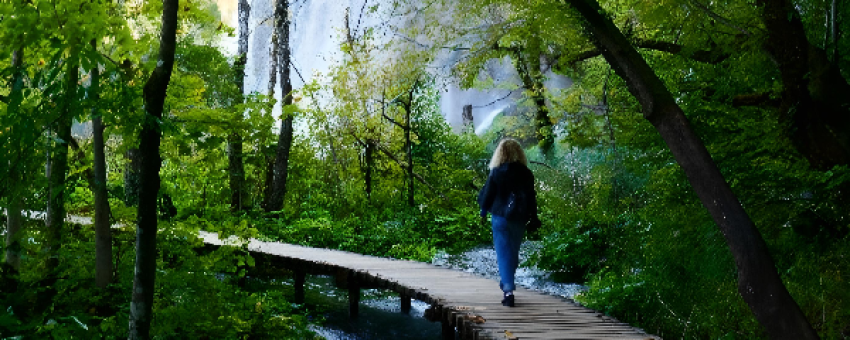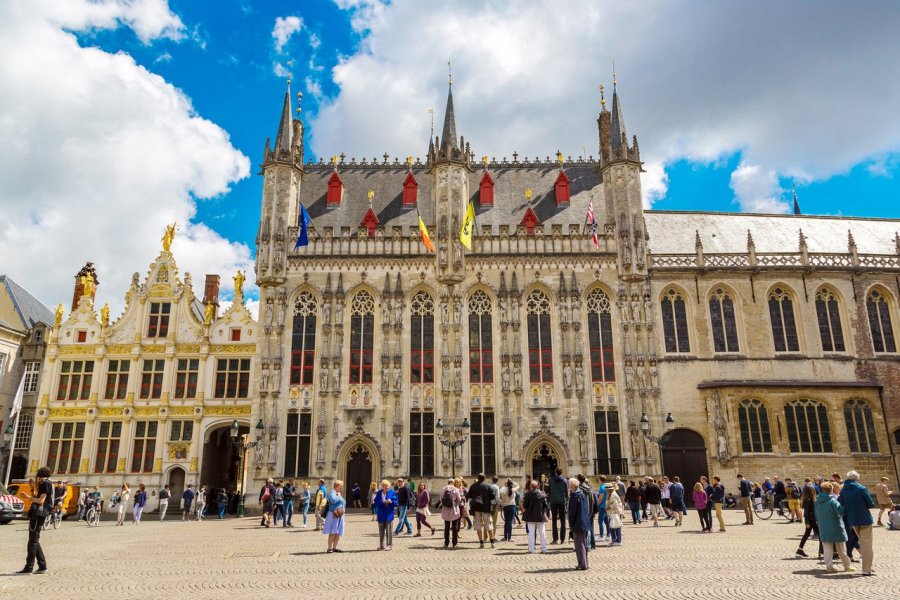AUTHENTIC CROATIA
Croatia's strange shape is already surprising. The arc that the country represents can be explained by the history and very particular issues that make up the richness and diversity of Croatia today. The country reconciles a long stretch of coastline with one of the world's largest concentrations of islands, marked by the Mediterranean context and the continental Pannonian plains closely linked to the Austro-Hungarian plains. These two landscapes are bordered by the Julian Alps to the north and the Dinaric ranges that run all the way down to Greece. Whether on the coast or on the plains, Croatians have always been a trading people, benefiting from their position at the crossroads of numerous trade routes, often dating back to antiquity and even further. The town of Trogir, for example, was the site of an ancient Greek colony. The Roman heritage is most closely associated with Split.
Highlights of the trip
During your stay you can enjoy the following highlights: Culture / Heritage, Discovery, Relaxation / Well-being, Paradise Beaches, Local stay.
Best months to go
The best time(s) to go is/are : Mars, Avril, Mai, Juin, Juillet, Août, Septembre, Octobre.
How to get there?
You can get there by Plane, Boat, Car.
SVETA ANA TRAVEL AGENCY
Travel suitable for :
Detail of the stay : AUTHENTIC CROATIA - 12 days
Arrival at Dubrovnik airport - overnight in Poljice
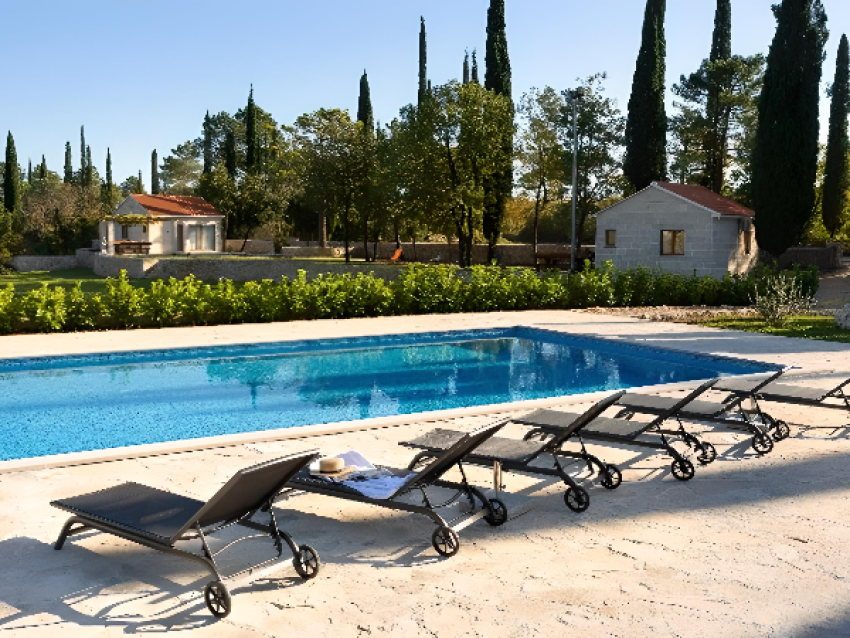
© SVETA ANA TRAVEL AGENCY
Steps: Poljice
Collection of the vehicle of the category chosen for a 12-day rental.
Settle into your Sveta Ana Lodges. The cottages are built in the traditional style, in freestone. The accommodation is 3-star superior and has a 100 m2 swimming pool. The maisonettes are studios with a surface area of 34 m2, equipped with a living room, TV, kitchen, air conditioning and bathroom. You'll have plenty of space with a volleyball/badminton court and barbecue facilities. The interior is equipped with a large double bed and a sofa bed, so it can accommodate 3 adults or 2 adults and 2 children. A unique project in the Dubrovnik region for those who love authentic, off-the-beaten-track travel with a fine approach to Croatia's most famous tourist site: the Dubrovnik region. Close to Poljice are the beautiful sandy beaches of the village Molunat, the impressive cliff-top beach of Pasjača, as well as typical restaurants on the banks of the river Ljuta or in the seaside villages Cavtat and Molunat. The large village of Gruda has several stores.
Dubrovnik (UNESCO) - overnight in Poljice
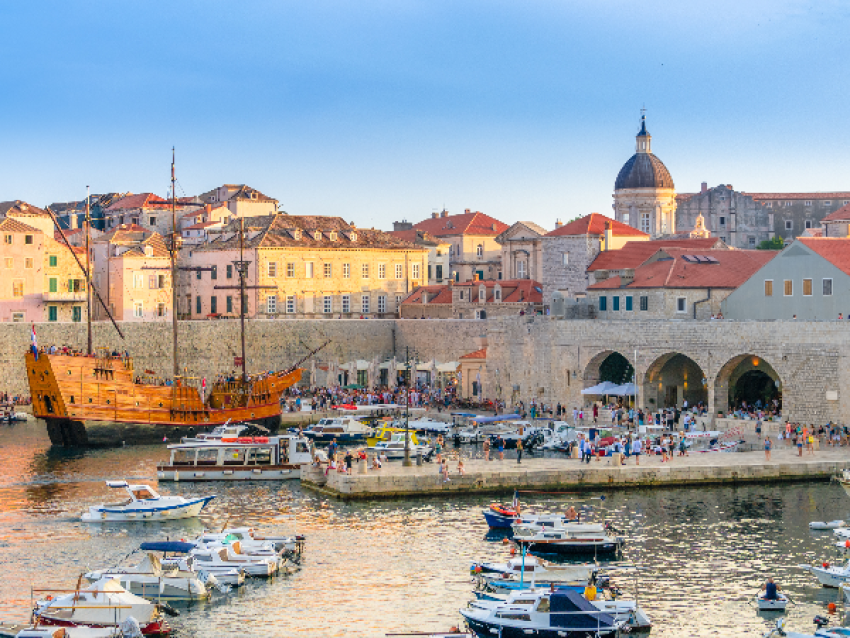
© SVETA ANA TRAVEL AGENCY
Steps: Poljice
Drive to Dubrovnik.
Dubrovnik was a Mediterranean city-state that preserved its freedom and avoided conflict through skilful diplomacy. It abolished slavery as early as the 15th century, its hygiene measures prevented major epidemics, and its facades are all identical to avoid social unrest... all astonishing measures of this historically avant-garde system. The magnitude of its commerce can be read in every stone of this city, one of the best-preserved medieval towns in the world. the UNESCO-listed "Pearl of the Adriatic" is Croatia's top tourist destination, and will surprise you with its beauty and exceptional culture at the crossroads of Europe, the Mediterranean and the Near East.
From Dubrovnik's old town, there are the following options:
-swimming on Banja beach, located just to the east of the old town. This is Dubrovnik's most famous beach
-take the cable car up to St. Sergius Hill with Napoleon's Imperial Fort, now housing a museum on the war of explosion of Yugoslavia.
-take the liner boat to visit the island of Lokrum
-sea kayak tour along the ramparts... or other sporting activities (jet skiing, parasailing, diving...)
Return and overnight at Sveta Ana Lodges in Poljice.
The Kotor Mouths (UNESCO) with Kotor and Perast in Montenegro - overnight in Poljice
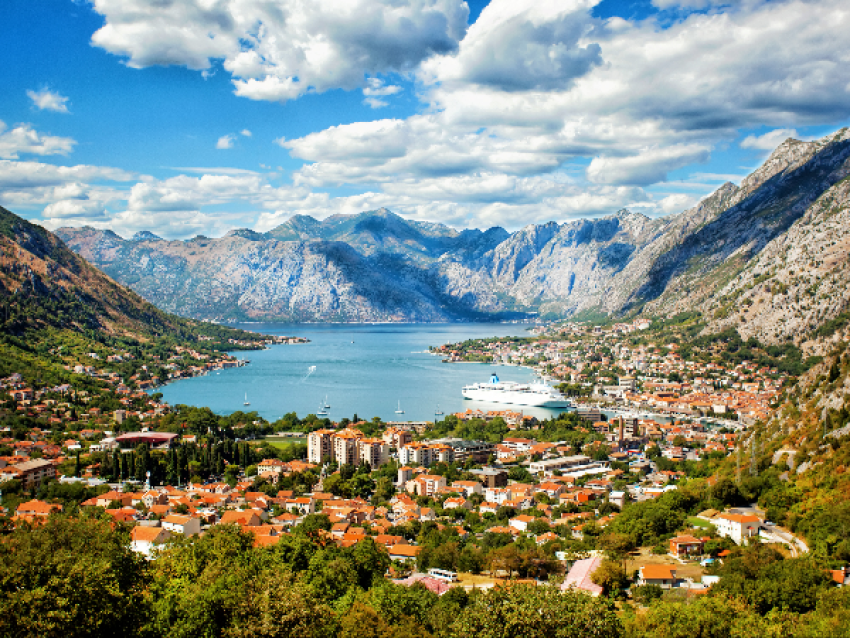
© SVETA ANA TRAVEL AGENCY
Steps: Perast
Drive to Perast along the scenic coastal road. Journey time: 1h00
The whole of Perast, in the heart of the Bouches de Kotor, has been declared a historical monument. It's a village-museum whose Baroque palace architecture is a reminder of its illustrious maritime past. The site is notable for the votive church of Our Lady of the Rock, built on an artificial islet by its inhabitants to pay homage to an icon of the Virgin Mary, found according to legend on a rock off the coast of the village. It is served by boat shuttles. Austere from the outside, you'll be impressed by its collection of ex-votos and the richness of its Baroque paintings
Free time to explore Kotor
Kotor is a fortified city of ancient origin with an exceptional natural harbour: the Kotor Bays. It built its reputation on trade and shipping, particularly between the 12th and 14th centuries, when it became part of the Serbian Empire. A meeting place of cultures, it is home to both Catholic and Orthodox churches. The city walls, an incredible 5.5 km long, rise up on the slopes of the bay of the Bouches de Kotor, offering splendid views of this UNESCO World Heritage site.
We recommend a visit to St. Triphon's Cathedral and the Maritime Museum
Return and overnight at Sveta Ana Lodges in Poljice. Journey time: 1h30
Sailing cruise in the Elaphite archipelago - overnight in Poljice
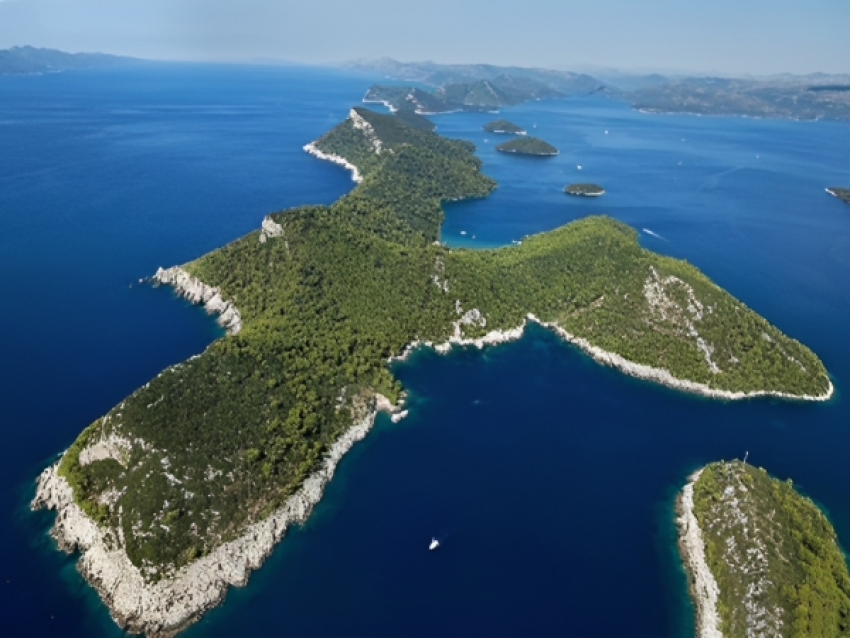
© SVETA ANA TRAVEL AGENCY
Breakfast on your own
Departure point for private sailboat cruise.
Duration: 40 min.
The Elaphites is the southernmost island archipelago in Croatia and the Adriatic Sea. It comprises 13 islands, 3 of which are still inhabited today. Koločep was an ancient Greek colony dating from the 4th century BC, and is home to pretty little pre-Romanesque Croatian churches and a protected nature park, laid out with beautiful, easy hiking trails. The island of Lopud is known for its maritime tradition, as evidenced by its ancient palaces. It is also famous for its magnificent sandy beach, Šunj. Šipan has a high concentration of olive trees and is named "The Golden Island". The village Suđurađ offers the only fully restored and visitable nobles' residence of the former Dubrovnik republic, allowing visitors to discover the region's typical country architectural heritage. The Elaphites are famous for their exceptionally clear waters. This cruise will take you between a dream and a reality of virtually untouched beauty.
You'll first sail to the island of Koločep, where you'll find a blue cave. This phenomenon is due to a peculiar situation: the cave is half-filled with sea water.=
Continue to the island of Lopud, an island of wealthy shipowners, famous for its beautiful sandy beaches.
17h00. Return to Dubrovnik by boat,
Pasjača beach, Cavtat and gourmet dinner in Konavle - overnight in Poljice
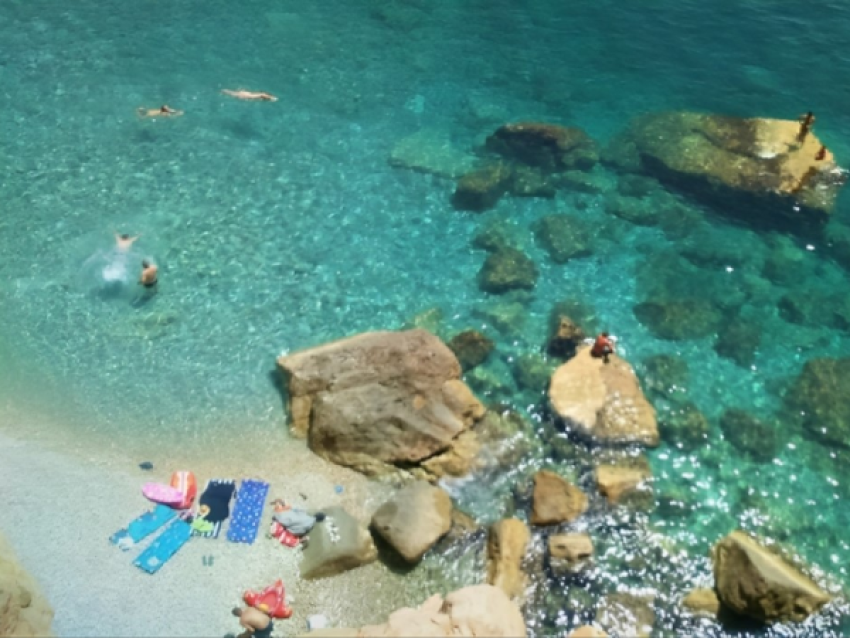
© SVETA ANA TRAVEL AGENCY
Steps: Cavtat
Road to Popovići.
Bathing on the paradisiacal beach of Pasjača at the foot of the Konavle cliffs, just the path along the cliffs will leave you with unforgettable memories. Pasjača is ranked among the 24 most beautiful beaches in Europe. An unusual experience!
Return to Sveta Ana Lodges in Poljice.
Drive to Cavtat. Journey time: 20 min.
Free discovery
Cavtat is one of the most beautiful villages on the Dubrovnik Riviera. The Romans chose this enchanting spot to found the "Epidaurus" colony because of its special natural position, protected by two capes jutting out into the sea.
Drive to Ljuta.
Dinner at the renowned Konavoski Dvori restaurant.
Konavoski Dvori means "the palaces of Konavle". It was a vast complex of watermills powered by the Ljuta river (meaning "the furious one"). In the days of Yugoslavia, part of the complex was restored to create one of the most renowned restaurants in all of southern Croatia, and although other restaurants might lay claim to fine dining in the Dubrovnik region, the tradition and setting of Konavoski Dvori remain unrivalled. The waitresses are dressed in traditional costumes and the food is entirely organic. The natural setting is magical.
Cuisine under the bell (very original)
Pelješac peninsula with oyster and mussel cultivation with a farmer, wine tasting at a winemaker's and Korčula - overnight in Dominče
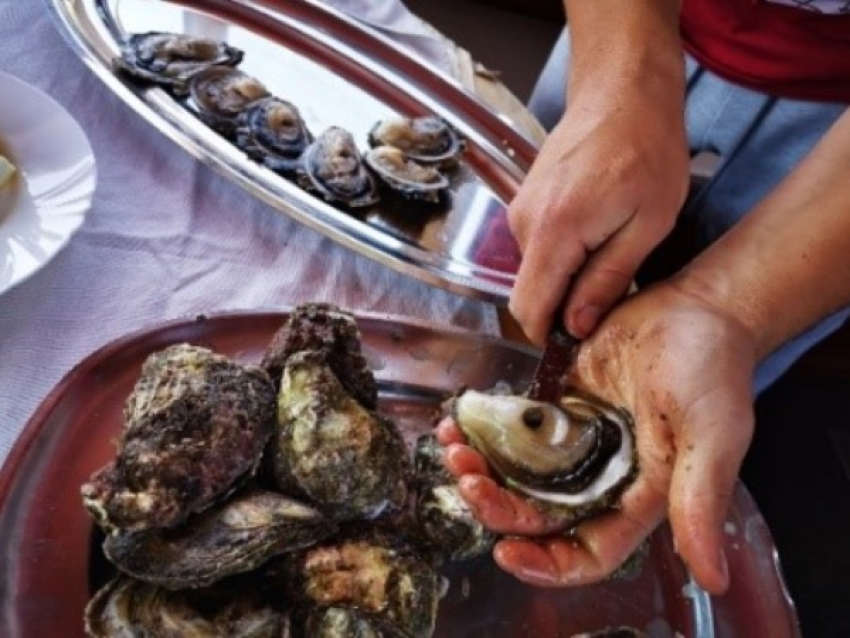
© SVETA ANA TRAVEL AGENCY
Steps: Korčula
.Free discovery of StonThe
village of Ston lies at the connection of the Pelješac peninsula with the mainland.
Excursion to the oyster and mussel fields with an oyster farmer and show cooking on boardYou
'll board a small Dalmatian wooden trabakula boat. You'll first visit the mussel and oyster fields to learn about the farming process in situ.
6 oysters straight from the sea will be tasted by the farmer, and mussels "buzara" will be prepared in front of you.
Drive to the village of Ponike.
Wine and olive oil tasting with a family of winegrowers
.Welcome and short presentation of winegrowing on the Pelješac peninsula, followed by a tasting of liqueurs, white wine and olive oil.
Drive through the Pelješac peninsula, known for its splendid scenery, to Orebić.
Transfer by ferry from Orebić to Dominče (Korčula).
Drive to Korčula.
Korčula conveys the spirit of the Dalmatian islands, marked by the Venetian presence and the influences of the Dubrovnik Republic. Its history is marked above all by the brotherhoods that are still active today.
Animportant seaport in the Middle Ages, it was the birthplace of the great trader and traveler Marco Polo
mljet Island National Park, in the footsteps of Ulysses - overnight in Dominče
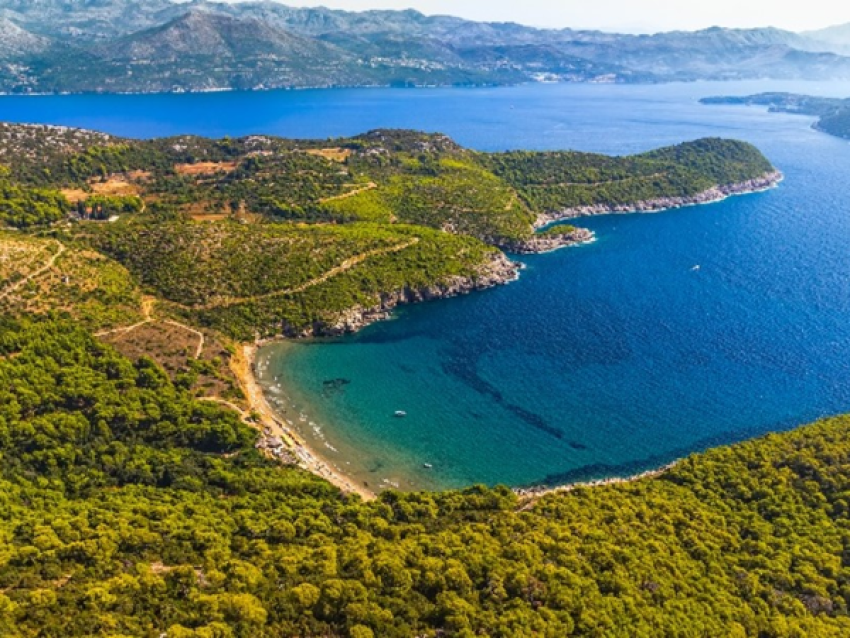
© SVETA ANA TRAVEL AGENCY
Steps: Mljet
Breakfast at the hotel.
Drive to Korčula. Driving time: 10 min.
You can walk to Korčula along the seafront promenade from Dominče beach to Korčula. Walking time: 15-20 min.
Transfer by motor catamaran from Korčula to Pomena (Mljet). Duration: 30 min.
Free time to explore the national park on the island of Mljet. We recommend a visit to the islet of St. Mary with its 11th-century monastery.
(entrance fee not included, payable on site)
Mljet is the island of the Odyssey, where Ulysses stopped ... in the arms of the nymph Calypso, for 7 beautiful years. Pine and oak forests cover its territory, a third of which is part of the national park. Its main feature is two interconnected lakes, themselves linked by a narrow passageway to the sea. The larger of the two lakes is still an island - an island within an island! This unique configuration was created by the rising waters around 10000 BC, creating exceptional flora and fauna. On the Sainte Marie islet is a former Benedictine monastery dating back to the Middle Ages, now home to a restaurant. This is an ideal spot for swimming, as the lake water temperature is higher than that of the sea.
Transfer by motor catamaran from Pomena to Korčula. Ticket included.
Return and overnight stay at the Hajduk guesthouse in Dominče
Lunch and dinner on your own.
Šibenik (UNESCO) - overnight in Jezerce
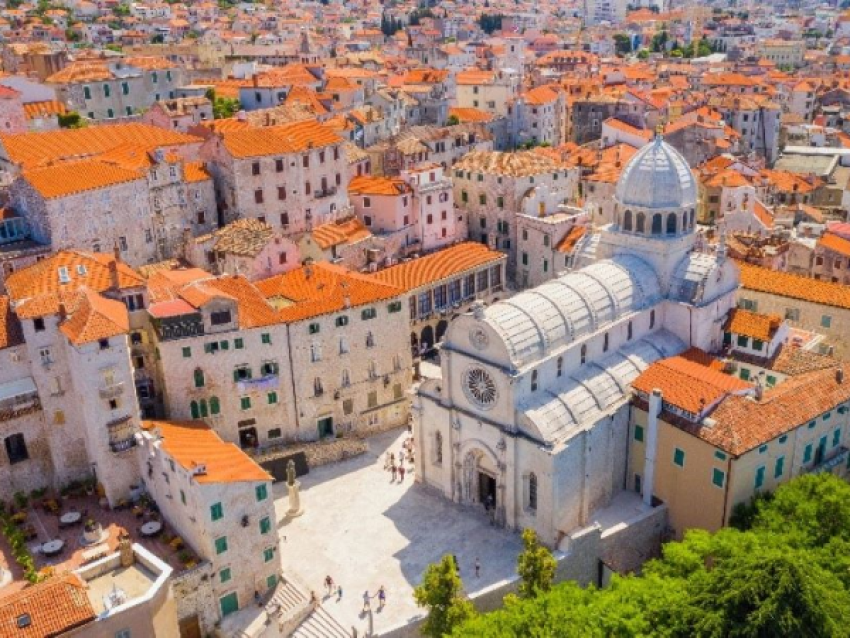
© SVETA ANA TRAVEL AGENCY
Steps: Šibenik
Drive to the ferry terminal in Dominče
Transfer by ferry from Dominče to Orebić. Ticket included.
Panoramic drive to Šibenik, passing the spectacular 2.5 km bridge between the Pelješac peninsula and the mainland, the hortillonization of the Neretva river delta and the Dalmatian plateaus.
Discover Šibenik
Šibenik is a picturesque Dalmatian village founded by the Croats, unlike other Dalmatian towns of ancient origin. A royal town with numerous fortresses, it is famous for its Cathedral of St. James, an unrivalled feat of architecture that has earned it UNESCO World Heritage status. Šibenik is one of the only towns in Croatia with a beautiful beach close to the historic center
Drive to Jezerce in the Dinaric Mountains.
Check-in at the Etnohouse 3* guesthouse. Accommodation in a double room.
The Etnohouse Plitvice guesthouse is a collection of traditional 3-star superior and 4-star houses, built entirely from local materials, including the protected river travertine. This is one of the only structures in the National Park with a swimming pool, as it was built before the park was protected. All the rooms are fitted out with solid wood, with different species in each room (walnut, accacia, oak, etc.), and are a fine example of craftsmanship.
Plitvice Lakes National Park (UNESCO) - overnight in Jezerce
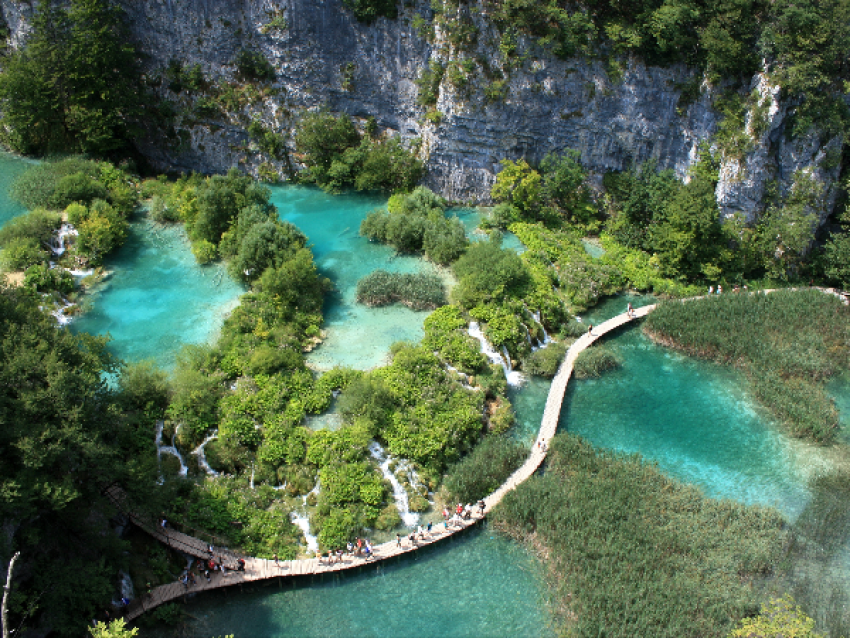
© SVETA ANA TRAVEL AGENCY
Steps: Plitvička Jezera
Breakfast at the hotel.
Drive to Plitvice Lakes. Journey time: 10 min.
(Entrance to national park not included. We'll give you instructions on how to book online in the route file).
Free visit of the national park with the travertine waterfalls in the upper part, the electric boat on the large central lake Kozjak and the lower canyon with the large waterfall and the tire train.
Distance: 8 km. Actual walking time: 3h00 - Hiking time with breaks: 5h00 - Difficulty level: 2/5
Plitvice Lakes National Park is located in the Lika region of Croatia. This UNESCO-listed natural phenomenon is made up of 16 crystal-clear lakes that flow into each other in magnificent waterfalls. A natural paradise. Discover the entire park with the travertine waterfalls of the upper section, the electric boat on the large central lake Kozjak and the lower canyon with the great 70 m waterfall. There are rest areas in the national park itself, with bistros serving grilled meats and a few simple dishes. The trails are easy and accessible. Protected since the late 19th century, this is one of Croatia's most beautiful natural sites.
Return and overnight at the Etnohouse Plitvice guesthouse in Jezerce.
Lunch and dinner on your own.
Zadar (UNESCO) - overnight at Kaštel Lukšić
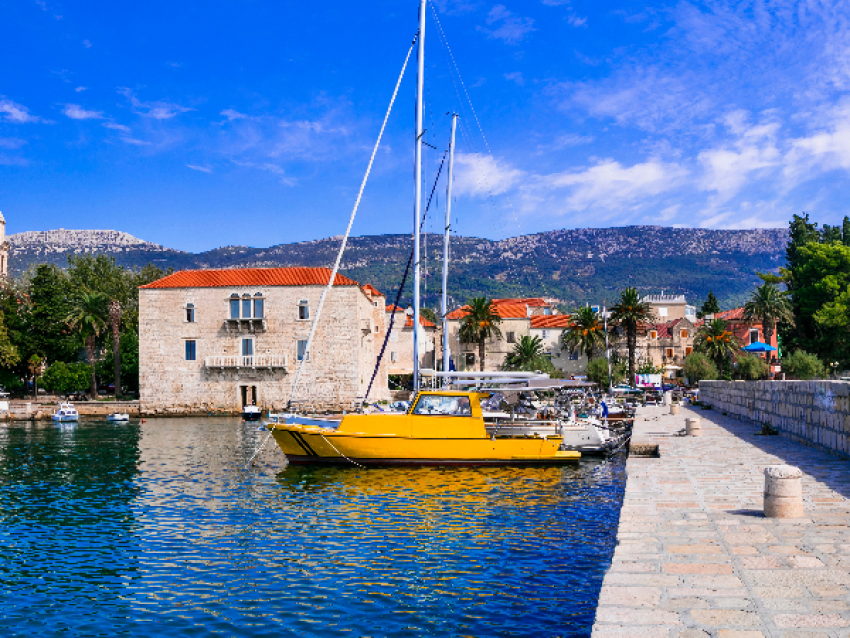
© SVETA ANA TRAVEL AGENCY
Breakfast at the hotel.
Drive to Zadar. Journey time: 2h00
Free time to explore Zadar.
Zadar has an ancient heritage dating back to antiquity and is a UNESCO World Heritage Site. Its main square is a Roman forum with the complex built by St. Donatus in the 9th century and a church modelled on that of Aachen, illustrating the close political ties with Charlemagne. The Benedictine nuns of Zadar have preserved an important collection of gold and silverware called Gold and Silver. Zadar is a dynamic city that has created modern monuments such as the organ built into the quay, on which the sea and the winds "play" a mystical, organic melody.
Drive to Kaštel Lukšić in the Bay of Split.
Check-in at Hotel Štacija 3*. Accommodation in a double room with sea view.
Hotel Štacija, located in a small seaside town, enjoys a quiet location close to many local attractions, including the UNESCO cities of Trogir and Split. The hotel offers quality accommodation and an à la carte restaurant specializing in modern interpretations of traditional local cuisine. All dishes are prepared with high-quality ingredients. You can enjoy them on a lovely terrace with sea view.
Lunch and dinner on request.
Split (UNESCO) - overnight at Kaštel Lukšić
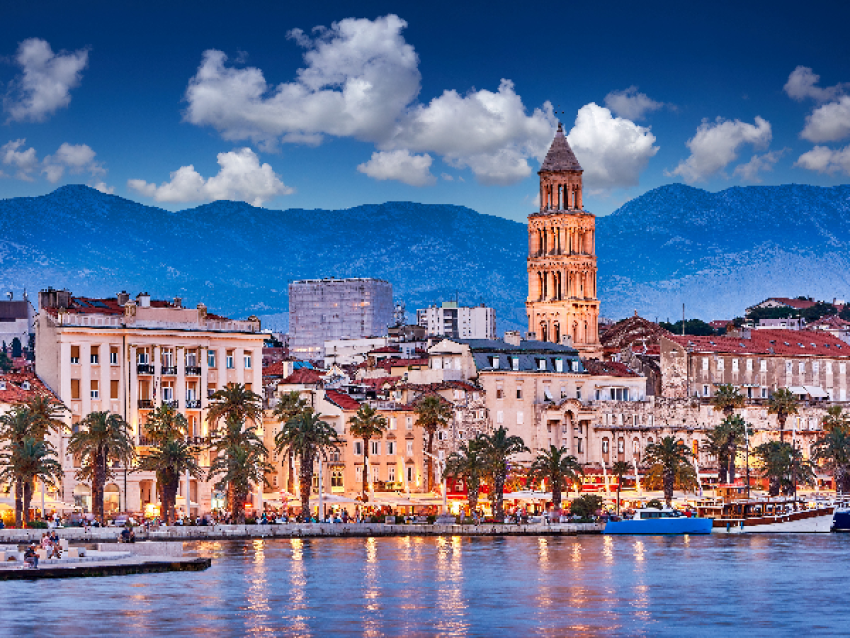
© SVETA ANA TRAVEL AGENCY
Steps: Split
Breakfast at the hotel.
Drive to Split. Journey time: 20 min.
Free time to explore Split.
Split is an original monument in that it is alive. The original Roman palace has been constantly transformed throughout history, with each era leaving its mark to create this magma of ever-changing architectural styles, now the center of Croatia's second-largest city and second-largest port. Its cathedral is the oldest in the world and a fine illustration of the spirit of Split, as it was the mausoleum of the greatest persecutor of Christians, the emperor Diocletian. The paradoxical state of preservation of Emperor Diocletian's palace has earned it UNESCO World Heritage status. Discover an extraordinary monument!
Return and overnight at Hotel Štacija in Kaštel Lukšić.
Lunch and dinner on your own.
Departure from Split airport (Trogir)
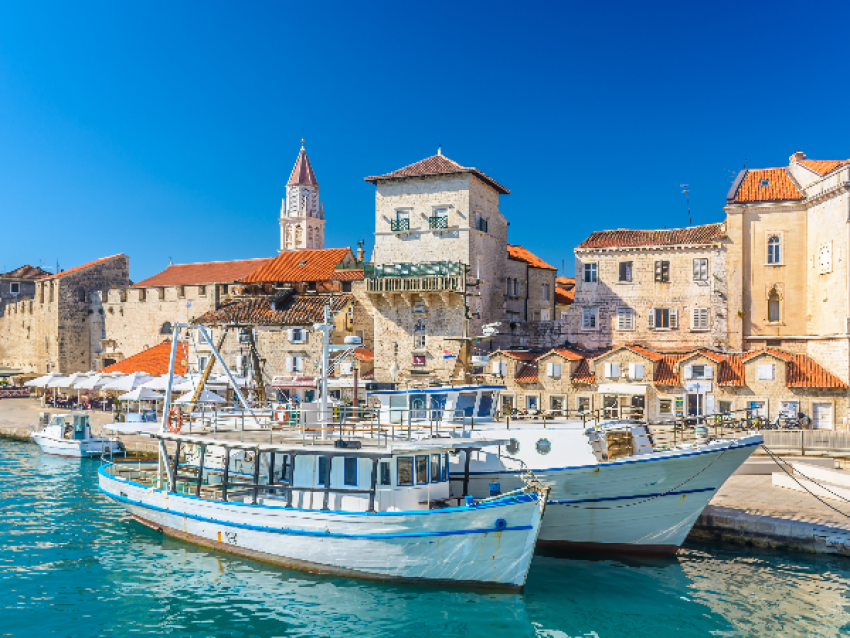
© SVETA ANA TRAVEL AGENCY
Steps: Trogir
Breakfast at the hotel.
Vehicle drop-off.
Departure flight
If your flight schedule permits, we suggest you visit Trogir.
Trogir is located on a small island very close to the mainland, to which it is linked by a bridge. Another bridge takes you from Trogir to the nearby island of Čiovo! The island of Trogir is an ancient Greek colony founded in the 4th century BC. Its commercial past can be seen in the rich architecture of its palaces and its cathedral with its revolutionary portal for the time. The charm of the old town also lies in its maze of medieval streets, where the past lives side by side with the present. The beauty of every moment explains its UNESCO listing and the discovery of a bas-relief depicting the Greek god Kairos, the god of the happy moment... but beware: he runs very fast!
